How did car companies maximize profits back in the day? Before the war, most automobile manufacturers offered cars with identical front ends, frames, and running gear with different bodies from the cowl back. This standardization of parts allowed them to save money by making roughly half of the automobile the same while diversifying the bodies to appeal to a variety of customers. Usually, the most popular body styles were a four-door or a two-door sedan. Next in the popularity pecking order would typically be some coupe variation. Coupes had two doors and the main seating was a bench seat, with the possibility of a much smaller bench seat or a set of jump seats in the rear. Many coupes offered only the front bench seat like this highly original 1937 Dodge and were thus called business coupes. Why the business coupe name? These were the chosen steeds of salespersons who had to drive a route back in the day.
While coupes were usually purchased by salespersons, they were also purchased by miserly drivers who didn’t have a large family to cart around due to their low selling price. This racy body style was characterized by an easily accessible trunk that was cavernous by today’s standards. Seats could also serve as a makeshift bed for more parsimonious and flexible drivers on overnight trips. As communication methods improved, the need for in-person sales and servicing accounts changed along with the tastes of American car buyers, and such vehicles slowly passed into history.
The 1937 Dodge coupe you see here is a very interesting and highly original example of this unique body style. According to the seller, the car is “100% original.” While that may not include the usual wear items, the car is still propelled by its original numbers-matching engine. The emblems, door handles, taillight lenses, and various other parts and pieces are what rolled off the assembly line so many years ago. Lubrication reminder stickers on the door post stand testament to the life the car has led up to now. There is also a bit of surface rust here and there to tell the story as well.
Looking at the picture above, we see that the owner’s claims of originality and completeness are valid. There are a few updates visible. The car rides on new Coker wide whitewall tires and the headlights have been converted to sealed beam units. We are also told that the braking system has benefitted from new wheel cylinder kits and these are fed with new brake lines. The master cylinder is mentioned, but it is not specified if it is a new unit or has been rebuilt as well. New shocks help to smooth out the bumps on all four corners.
A peek inside reveals worn and water-stained door panels and a seat that has seen an upholstery shop in the last decade or so. We also see the beautiful wood-grained dash that this car rolled out of the factory with, complete with a proper set of jewel-like instruments. Even in lower-priced cars back then we saw an attention to detail that stands in stark contrast to the ocean of plastic that resides in the interior of today’s automobiles. The seller’s claim that the 89,700 miles on the odometer reflects the true mileage is backed up by the previously mentioned lubrication stickers. Also mentioned in the ad is the presence of the original heater. Believe it or not, it still works as designed. The only item that does not work is the gas gauge, which is said to read erratically.
Above is a good look into the cavernous confines of a typical prewar coupe’s trunk. A traveling salesperson could pack a lot of products into the wide, deep, and tall area while still leaving enough front seat room to be comfortable. Some prewar coupes were also fitted with optional side extensions and a tailgate resembling a pickup bed’s rear section. Seeing coupes equipped with these is almost unheard of today due to increased exposure to weather. The water simply had no place to go when it rained and the trunk floor took a severe beating. Still, one would think that these kits would be a popular reproduction item for collectors looking to stand out at car shows.
Under the hood is the ubiquitous flathead inline-six Dodge engine that served the brand in production vehicles until its final performance in the 1968 Dodge Power Wagon, but lived on in industrial applications far longer. This one has been treated to spark plug wires, a distributor cap and rotor, points, a set of spark plugs, a fan belt, radiator hoses, and a carburetor rebuild. It is backed by a three-speed manual transmission and is said to run well. The car is driveable and “drives like a 1937 Dodge did when brand new.”
From here, the buyer will have to decide what future suits this coupe best. Do you think it should be left as it is, restored, modified, or given the full custom treatment? Please let us know your opinion in the comments.
Looking for an original prewar coupe you can drive? If so, this 1937 Dodge coupe for sale on Craigslist in Evergreen, Colorado may be the car you seek. This highly original Dodge has benefitted from numerous replacement parts to get it back on the road again and can be yours for $18,995. Thanks to T.J. for another amazing find!
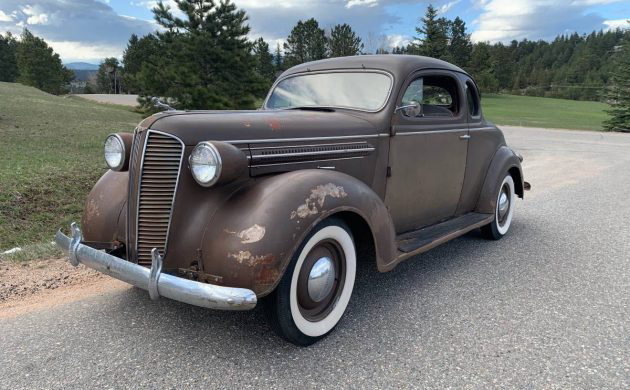
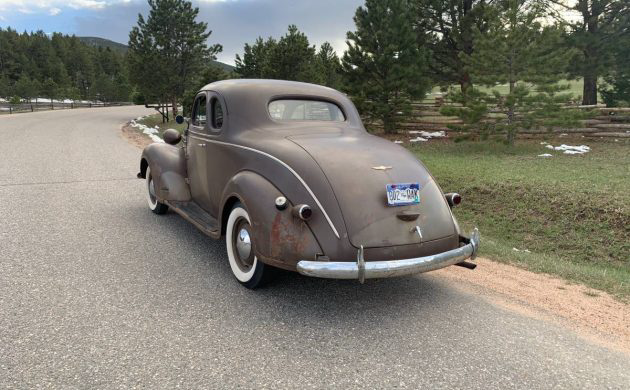
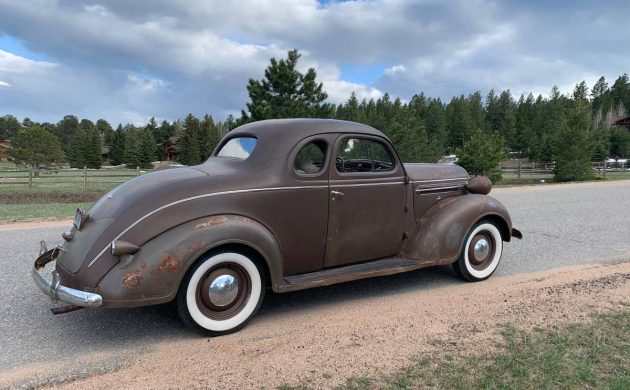

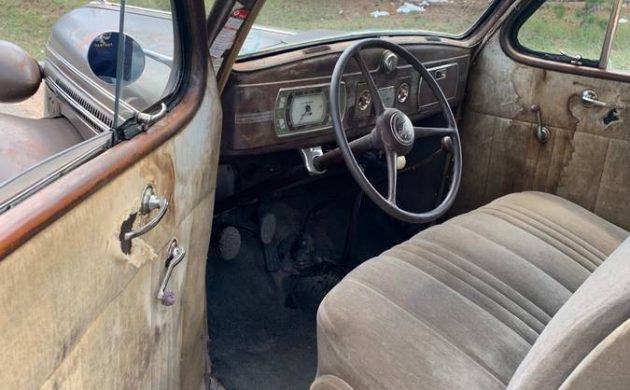

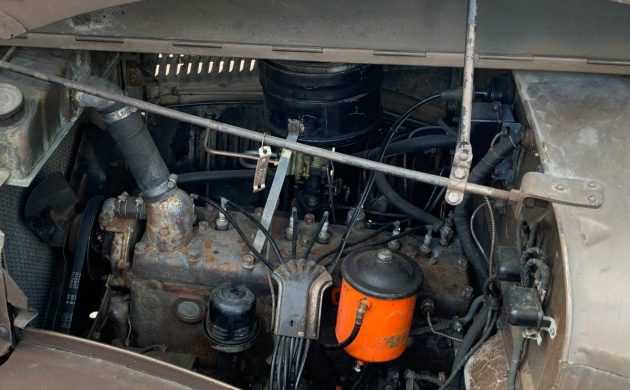


This is way cooler than a restored example. I’d replace the door panels, because those stains remind me of the squirts, and keep the rest as is.
Did not the name plate say Dodge Brothers?
Yes, they both read ‘Dodge Brothers’.
What a cool silhouette. To answer Jeff’s question: Modify. The interior has to go, it looks like something from a horror movie. And the engine too, 87 HP doesn’t do it for me, and neither does the chassis lol! All I would use would be the body, so this particular example is not “up my ally”
No, keep it original. No expense except maybe some of the interior and fix the fuel gauge. Where do you stop once modification starts? Make sure the original type brakes are in good shape, as stated. This is not meant for speeds over 55. A back road beauty.
I don’t stop the modifications until I sell. It’s my hobby and I’ll stop when they start throwing dirt on me. I don’t want any car that tops out at 55, I couldn’t safely drive it where I want.
Yup, for me , the door panels too, and I’d ditch the whitewalls . A business coupe was the low tier car, and it would have come with blackwalls . If you look at old movies and film reels , most cars didnt have whitewalls ; this was the depression era , and they were more expensive- and had to be cleaned a lot
Usually, all you have to do to eliminate WWs is to reverse the tires. They are only white walls on one side.
The 30’s: different from the cowl back. Pretty much what Mercedes-Benz does today.
Wouldn’t change a thing. Maybe the door panels but new ones wouldn’t look right. Maintain and drive.
If I could, I would.
I’d love to own this, but some modifications may be necessary for long, comfortable trips. I dislike the idea of disrupting an original, but doubt I could find a better example! I’m torn between two ideas. 40 or so yrs ago, I didn’t care. Now… I do!
Even nice enough to include a can opener to open oil cans under the hood. Not very useful for todays plastic garbage. Ah, the good old days.
I like this a lot. “Original” condition is a term that is open for interpretation. It means different things to different people. With this car I believe that the term is correctly used. Although one could argue that the fact that the seat cover was replaced may negate the completely original claim. Ok, moving on from the philosophical; I think that the car would be better suited for blackwalls as this certainly never left the factory with wide whites. That’s all I would change. I would keep the tatty interior door panels as is. Now if they could handle a cleaning without falling apart I’d give that a go. When I first saw the asking price I thought it was a bit high. But the more I think about it the more I would agree that it is certainly in the ballpark for a fair price. And the seller seems very realistic in that he is willing to negotiate face to face after you have had a test drive. Colorado is a long way from me so I’m just enjoying another great BF find. GLWTS
wow great car. I would never restore it. Meticulous cars like this are common, unrestored in this kind of shape must be hard to find.
Had one in black changed from green before I got it. Added the optional oil filter too. Great car. My buddy owns it now after it sat in a creek for years and went to Sh-t. Sad.
At the height of the Men’s Hair Pomade Wars of the 1920s-1940s. A fleet of Dodge Business Coupes fanned out across America driven by salesmen from the Daper Dan Brand Pomade Company. During the war no quarter was given and none taken as they battled for market supremacy against all comers but most of all with their arch rival FOP Hair Pomade Incorporated. FOP salesmen drove Plymouth P-3 Business Coupes exclusively. Rural America and it’s country backroads were the setting for the tooth and jowl competition as starving pomade salesmen raced neck and neck down 2-lane highways to the next farm center to be first in line at the general stores to deliver another load of “greasy kid stuff” and hopefully undercut the competition.
These break-neck driving stunts are what put notorious bank robber John Dillinger in an Iowa ditch one afternoon causing him to write an angry letter to none-other than Henry Ford. It said:
“Dear Mister Ford,
I am a professional Bank Robber and use Ford products exclusively in my work. But I am outraged to find that not even such as myself with my fearsome reputation am not able to avoid the dangerous shenanigans of this mob of greasers driving them high powered, agile, road hoggin’ Dodges and Plymouths. Them tanks just muscled me off the road up here in Humbolt Iowa. I tellya’ what is the world coming to when I, John Dillinger the most fearsome bank robber going these days, cannot feel safe in my little old V8 Ford. I hope you can be of some assistance in this matter.
Yours very Humbly,
John Dillinger
America’s Most Wanted Bank Robber.
i have the cousin to this dodge, 1937 plymouth business coupe,love the body style, im putting in a 6.1 hemi crate motor and new suspension, new front end and rear end and disc brakes—body stays untouched